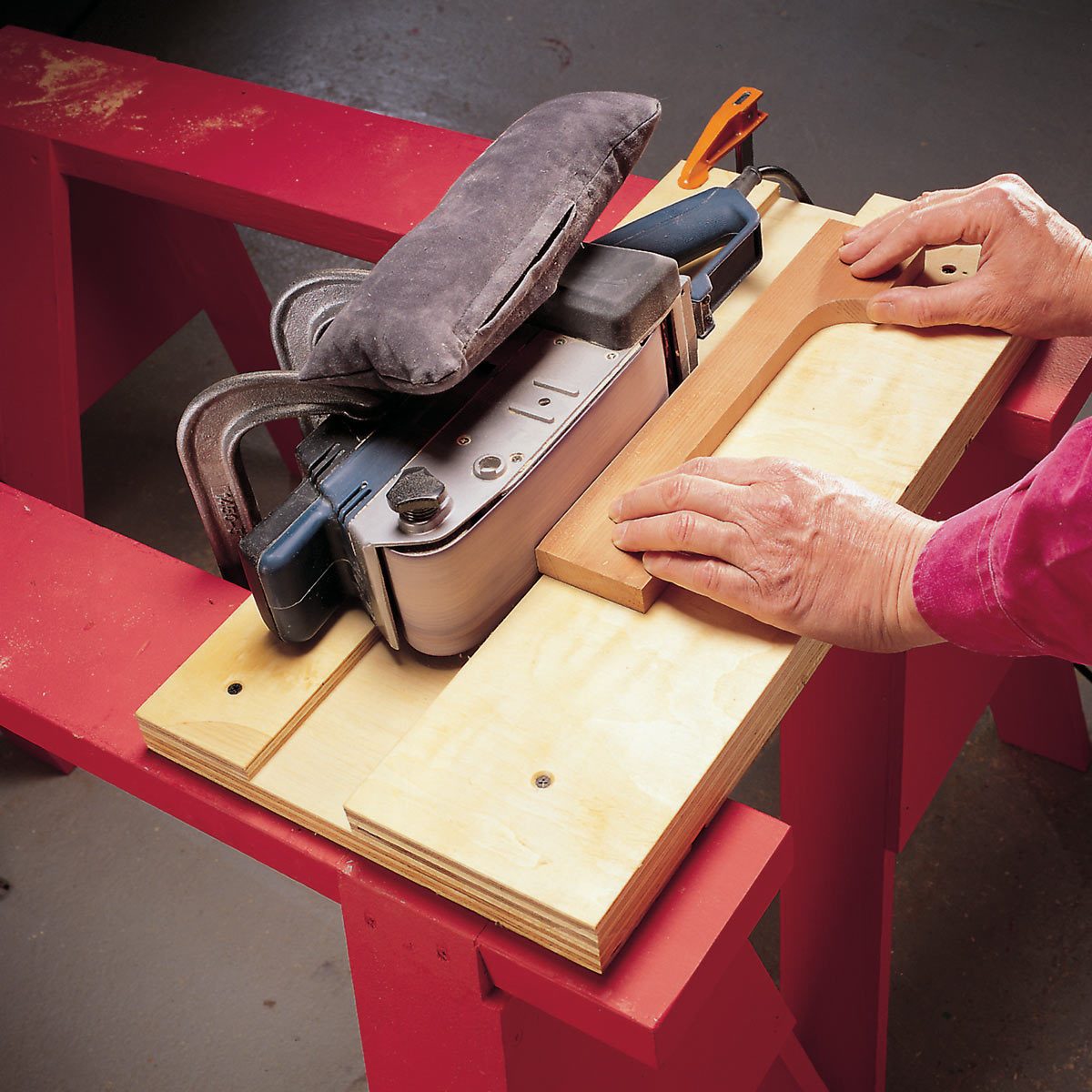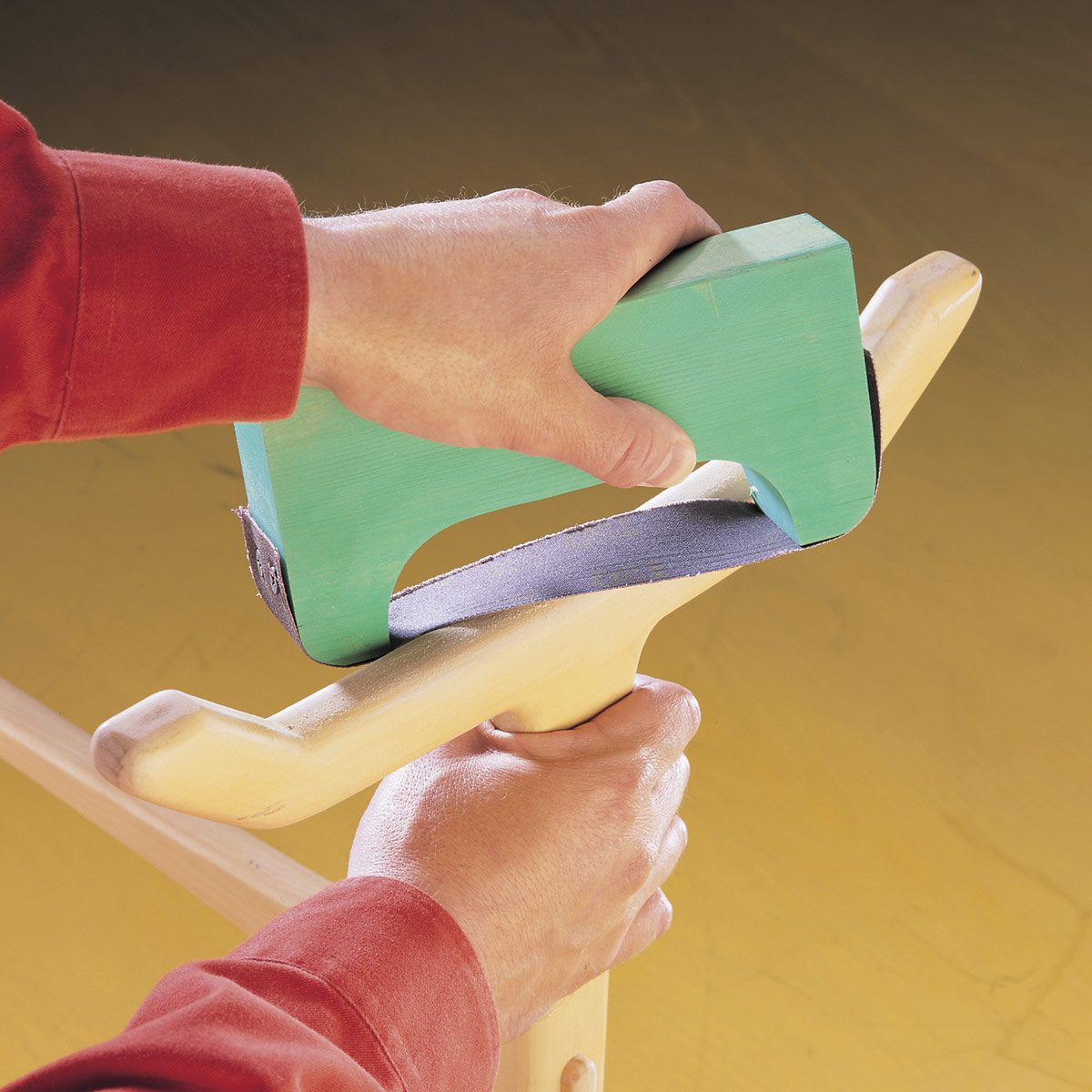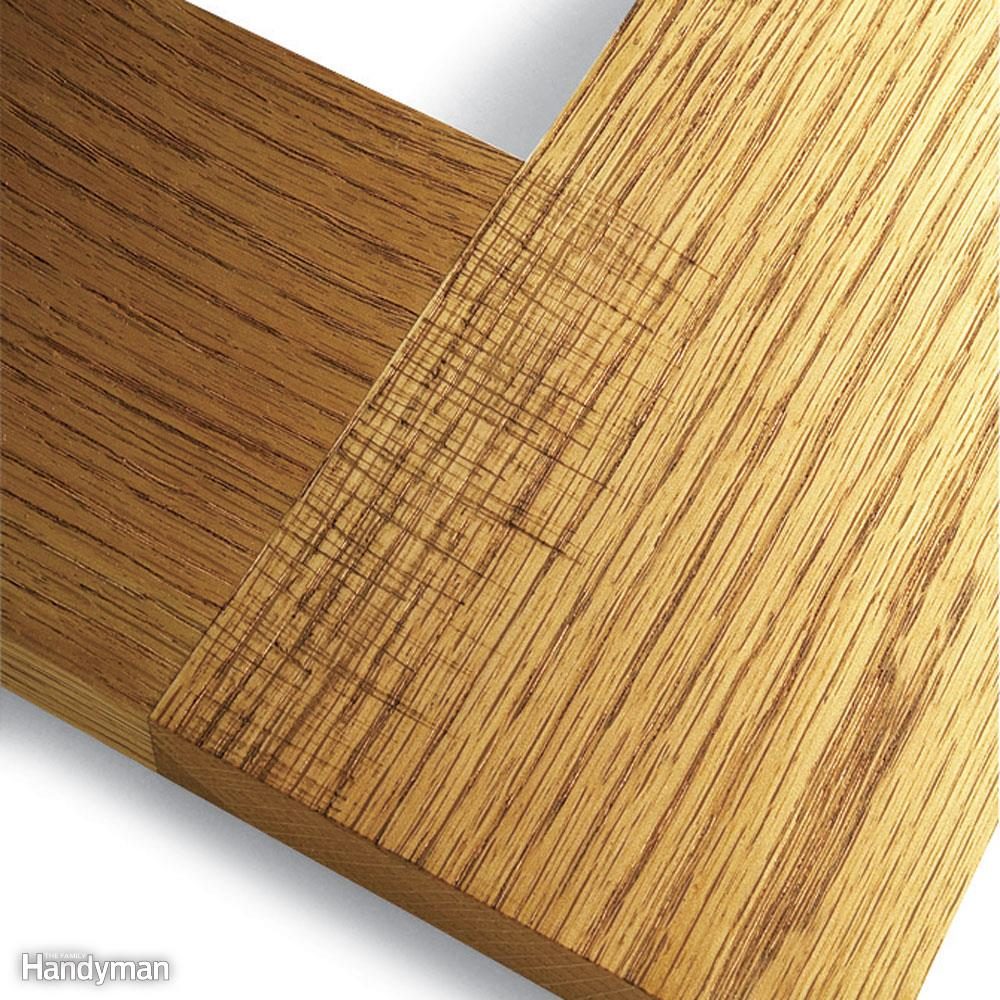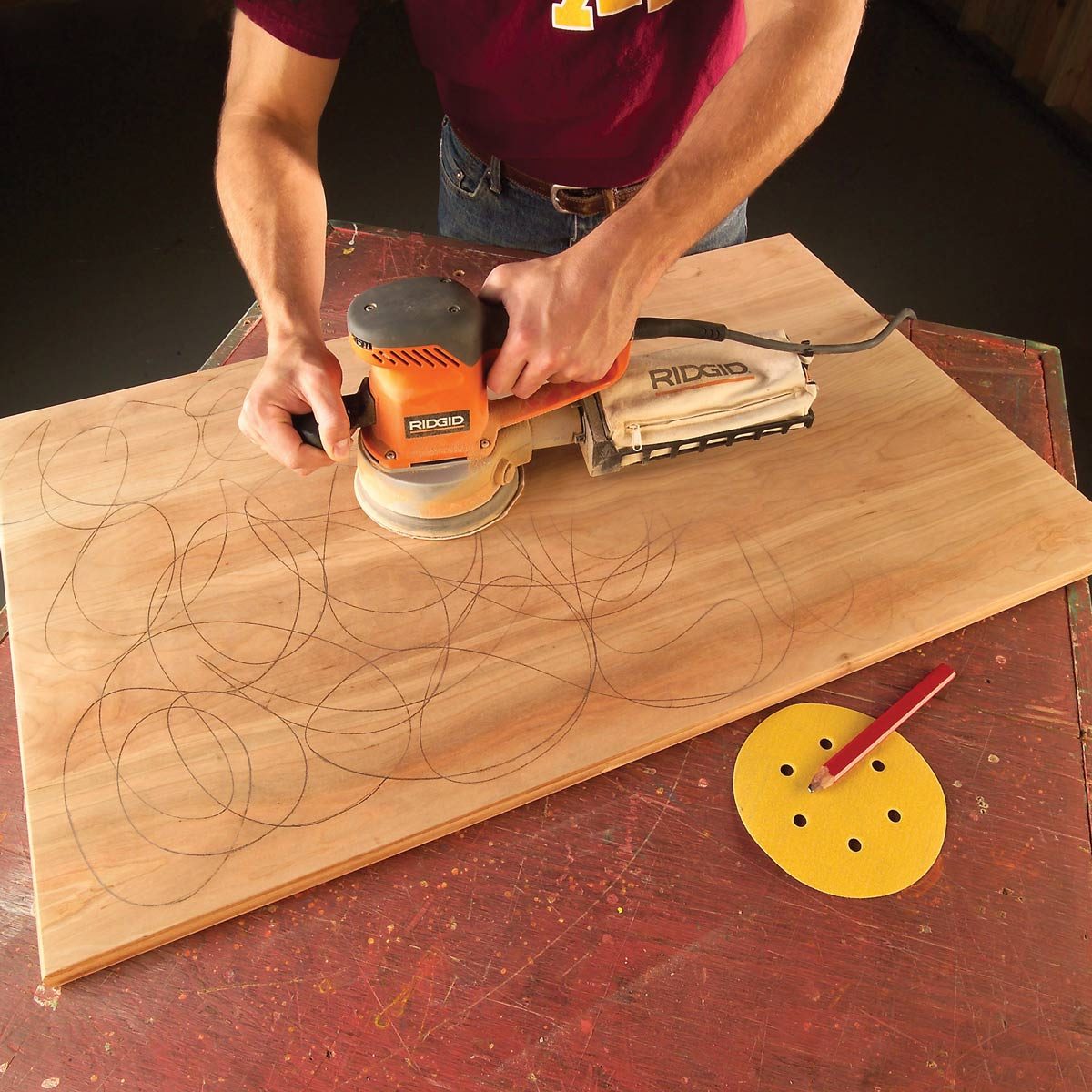Low-tech edge sander

A belt sander clamped securely on its side makes a great hands-free sander for sanding workpiece edges. Just screw a 20mm feed platform to a larger 13mm plywood base. You may also need a thin 6mm plywood strip as shown to elevate the sander body. Clamp the sander to the assembly (snug it – don’t overtighten). If you’re sanding a bunch of pieces, you may need to add a piece of plywood after a while to the feed platform to equalise the wear of the sanding belt.
Thick-skinned sandpaper

Put duct tape on the back of sandpaper and cut it into custom-sized strips for sanding in tight spots. The tape’s tough hide lets you sand without tearing the paper. The strips work great for sanding lathe turnings, cleaning dried glue from project parts, and doing any other job that requires a firm yet delicate sanding touch. Use a sharp utility knife and a straightedge to cut the strips.
Sponge grit label

After completing an entire kitchen remodel, I had acquired a shoebox full of sanding sponges with different grits, but now I don’t know which block has which grit. I’d like to say I keep the original packaging for items like this, which would indicate the grit and other details for my sanding sponges, but that just doesn’t happen.
I learned my lesson! Now, before I toss the packaging in the garbage can, I write the grit number on the side of the sanding block with a permanent marker. — Matt Owczarczak
Don’t miss these 40 easy life hacks for organising your home.





